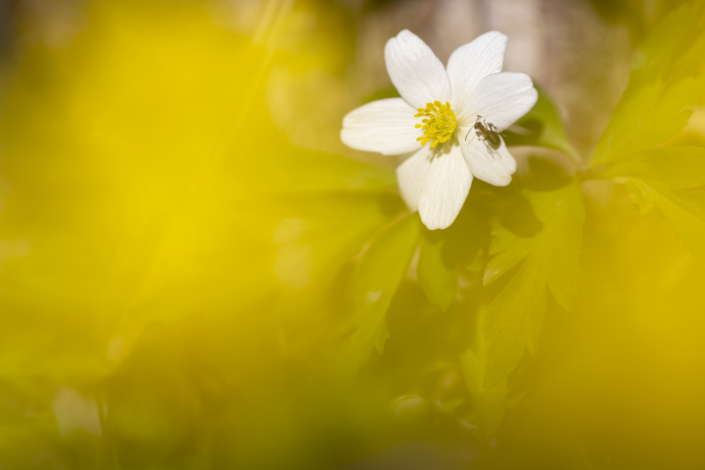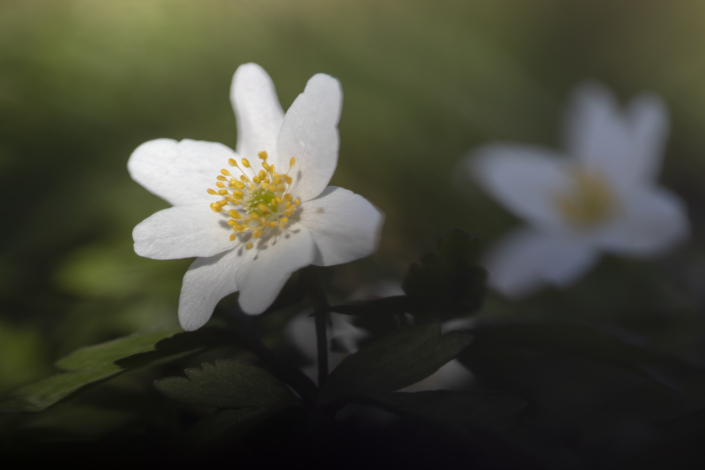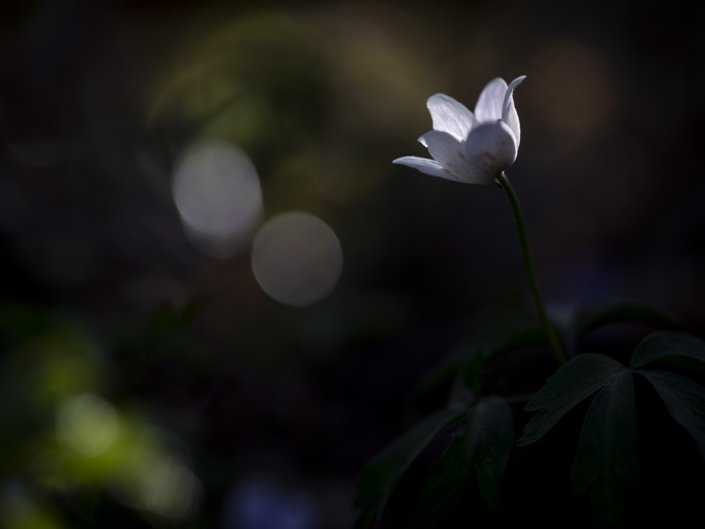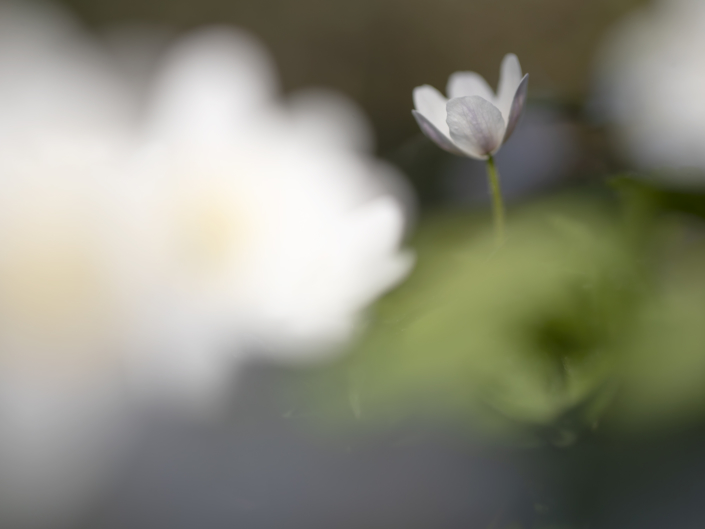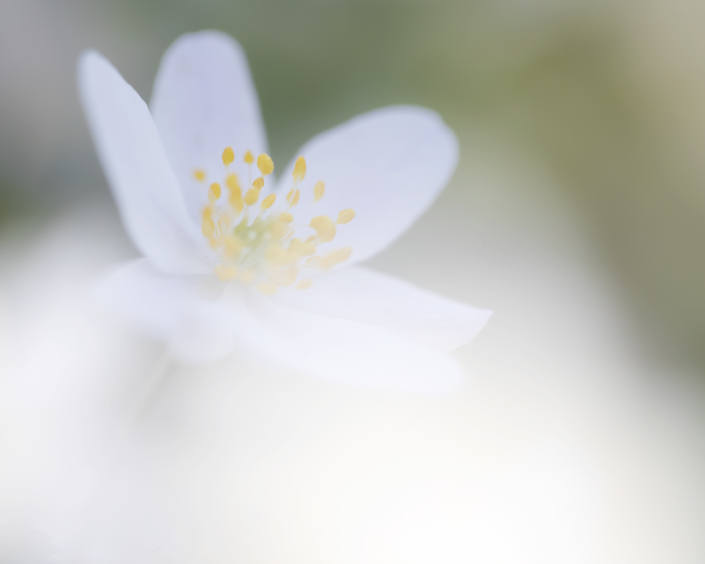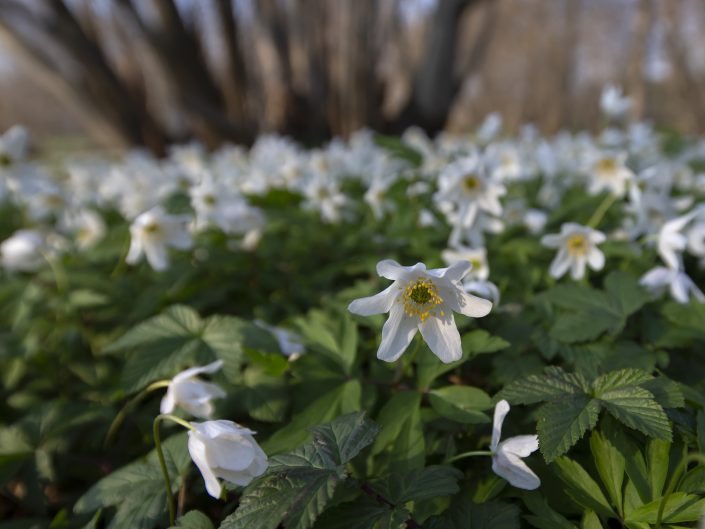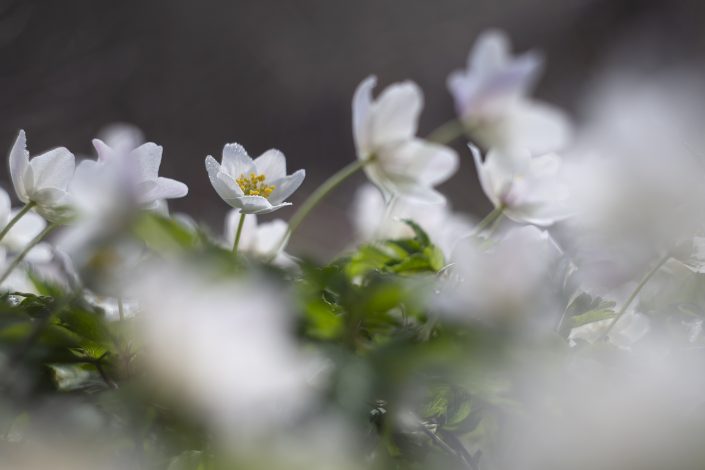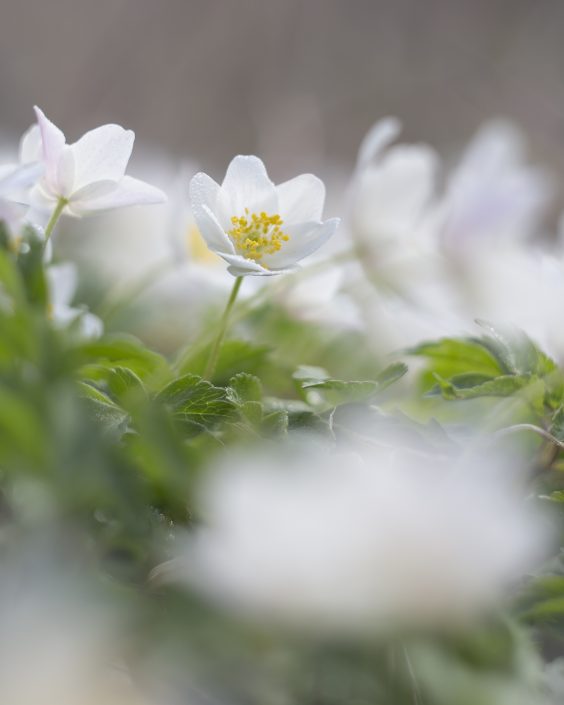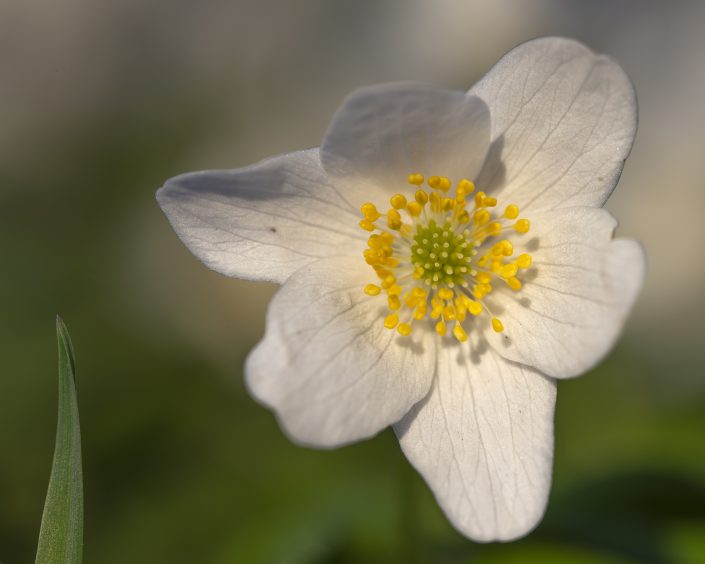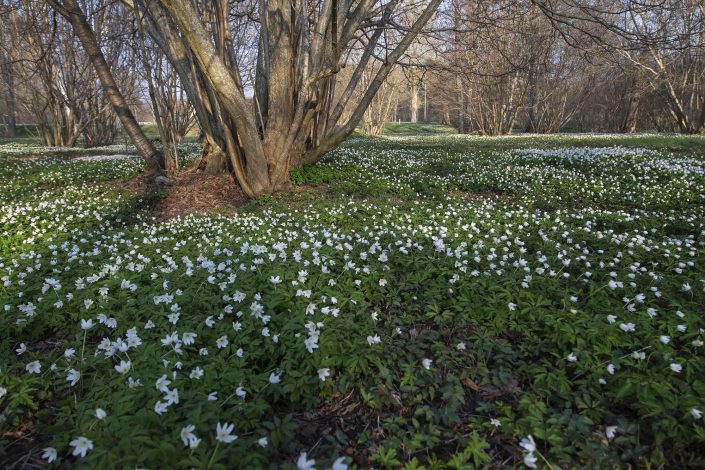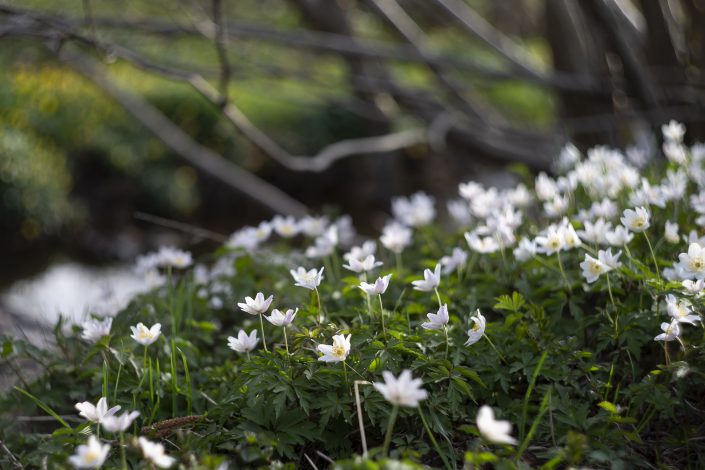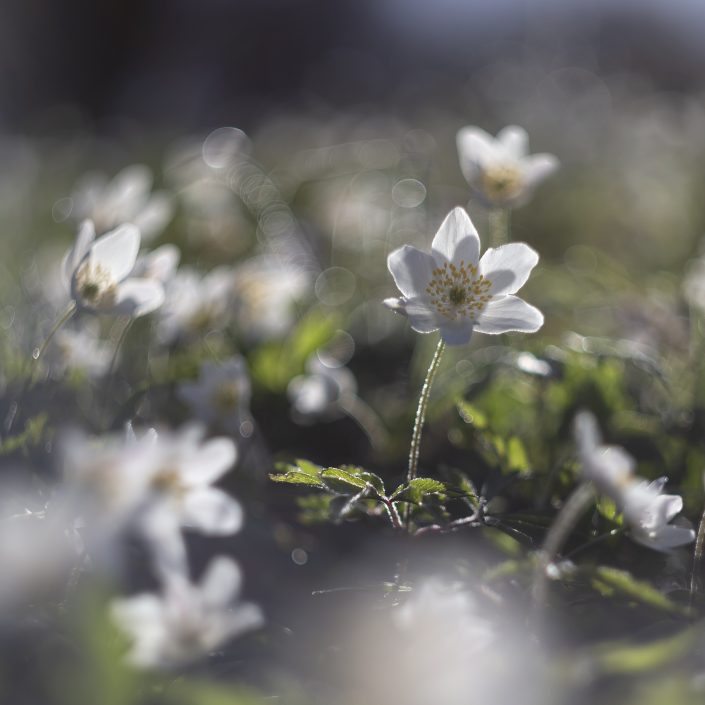This post is also available in: Swedish
Wood anemone – Anemone nemorosa
Wood anemone – Anemone nemorosa
is an early-spring flowering plant in the buttercup family Ranunculaceae, native to Europe. Common names include wood anemone, windflower, thimbleweed, and smell fox, an allusion to the musky smell of the leaves. It is a herbaceous perennial plant growing 5–15 centimetres (2–6 in) tall. The plants start blooming soon after the foliage emerges from the ground. The compound leaves are palmate or ternate (divided into three lobes)[1]:106 and the flowers are solitary, produced on short stems, held above the foliage. They grow from underground root-like stems called rhizomes and the foliage dies back down by mid summer (summer dormant). The rhizomes spread just below the soil surface, forming long spreading clumps that grow quickly, contributing to its rapid spread in woodland conditions, where they often carpet large areas.
The flower is 2 centimetres (0.8 in) diameter, with six or seven (and on rare occasions eight to ten) tepals (petal-like segments) with many stamens. In the wild the flowers are usually white but may be pinkish, lilac or blue, and often have a darker tint on the backs of the tepals. The flowers are pollinated by insects, especially hoverflies. The seeds are achenes.




